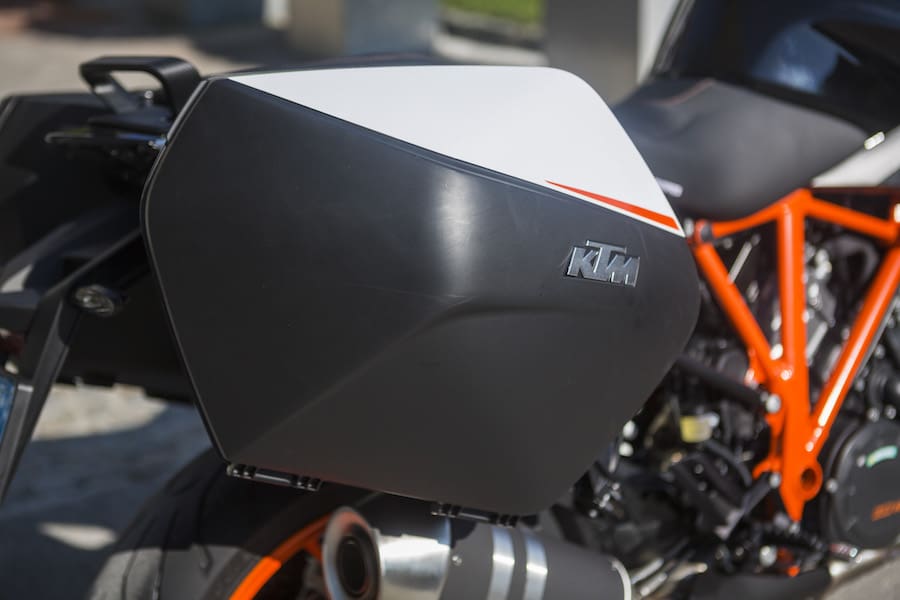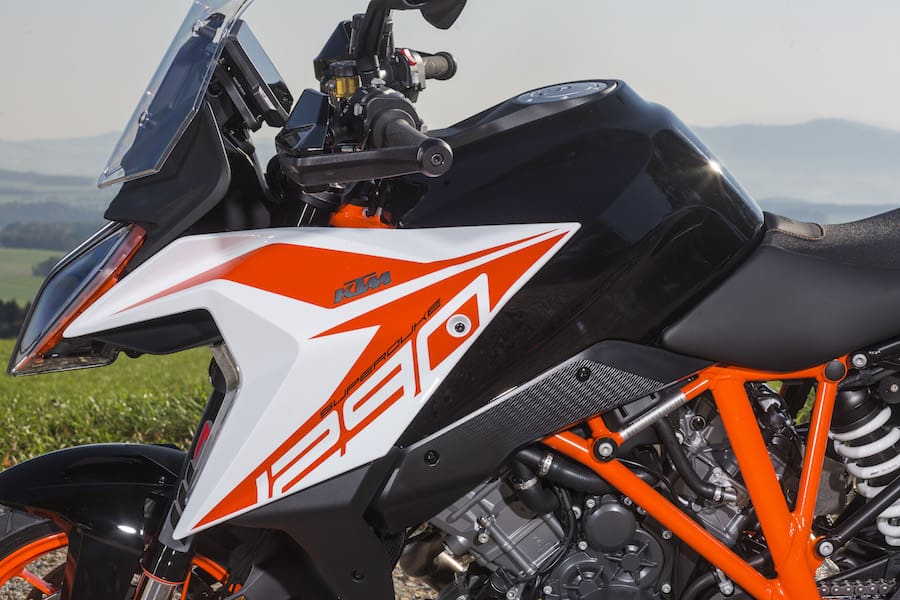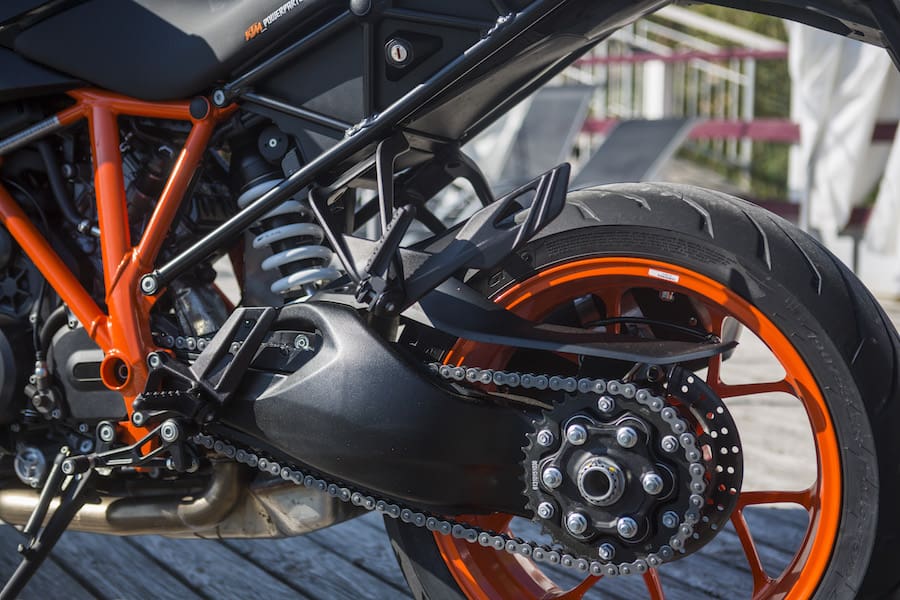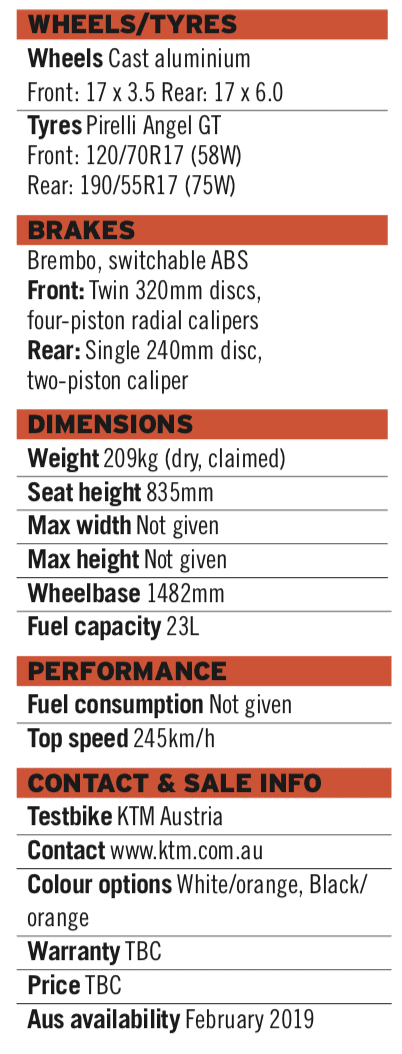“Our customers expect something sporty made the KTM way, not like other manufacturers do it,” president Stefan Pierer told me in an interview. “I don’t think a sport tourer in the classic way matches 100 percent with KTM’s brand identity.”
Since the 1290 Super Duke GT’s launch in 2015, it has provided owners with the dazzling performance and benchmark handling of the no-prisoners Super Duke R streetfighter, coupled with everyday practicality and user friendly convenience. Certainly not the way other manufacturers do it.
And while here in Australia inexpensive small-capacity bikes are leading the way in terms of sales in an otherwise declining market, the 1301cc and most expensive model in the KTM stable has significantly contributed to not only the firm already being Europe’s largest motorcycle manufacturer, but for ramping up sales by a further 15 percent in the first half 2018, itself another record year.
Despite being the first ever V-twin KTM with touring pretensions, the GT has been such a hit – especially in Germany, where over 50 percent of all GTs built so far have found owners – that KTM devoted some R&D budget to making it better still.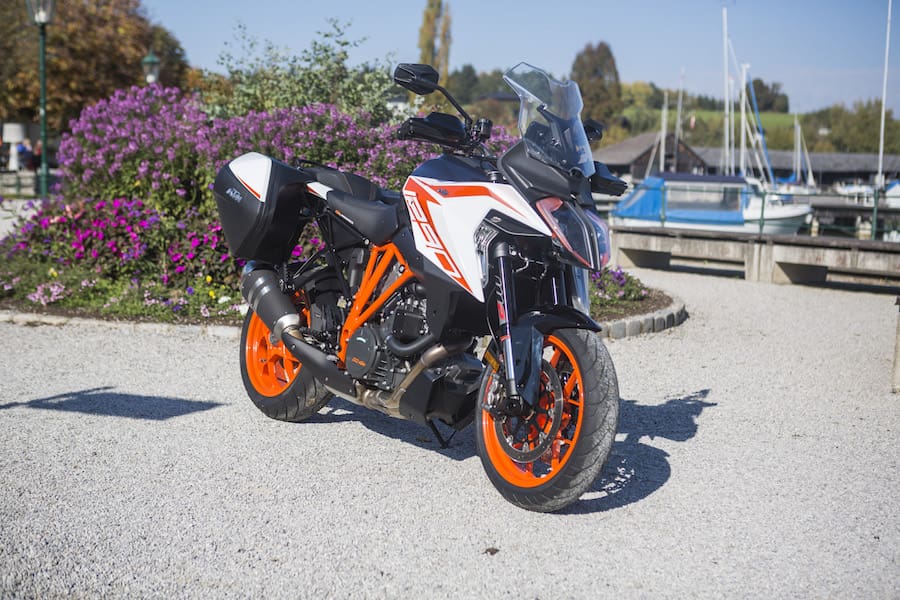
The 2019 Super Duke GT is even more fun to ride than before. It’s sharper, stronger and more refined in every way – a fact underlined by the outgoing 2018 GT which my riding companion Luke Brackenbury, KTM’s PR Manager, had brought along to compare and contrast with the new bike. Swapping back and forth between the two was pretty educational – I’d never have thought that the outgoing model would seem quite so dated, having itself set new sector standards on its 2015 release. Here’s why.
Part of it is visual, just looking at the two bikes side by side as you walk towards them, it’s evident that the new model’s heavily facelifted styling by Kiska Design has given it more presence, as well as a greater sense of substance.
The new, more shapely screen is also quite a bit more protective at speed than the older one, and is safely adjustable one-handed on the go through nine different positions over a range of 50mm. And despite the extra protection it gives when raised to the max on fast stretches, it doesn’t drum at higher speeds. Cruising at 160km/h with the V-twin engine running at 6500rpm was surprisingly relaxing for a neo-naked sports tourer, with excellent protection, very little residual windblast, and no excessive noise.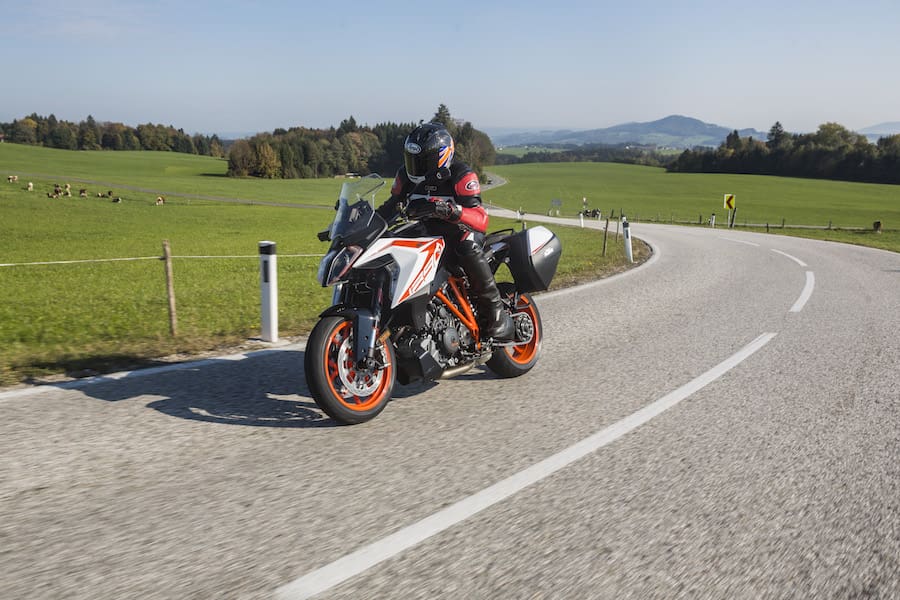
The 2019 GT’s redesigned front end also features wider and more protective side pods to the unchanged 23-litre fuel tank – five litres bigger than the R-model’s 18-litre affair. These now contain a new pair of storage compartments to hold stuff like freeway toll passes and credit cards to pay them, quite apart from the key for the bike which for the first time on a KTM now features the keyless remote system. You now don’t even need a key to unlock the fuel tank when refuelling, meaning that on this new bike you end up basically using the key only for the lockable panniers. There’s also a USB socket in the left-hand compartment to recharge your phone, but no room for anything larger.
The facelift also features a new and quite distinctive looking LED headlight, comprising six forward-facing ultra-bright LEDs within the central aluminium housing. Further LEDs deliver the daytime running lights incorporating self-cancelling indicators, and the three-stage lean angle specific LED cornering lights mounted within the tank spoilers. These are linked to the Keihin ECU’s lean-angle sensor, and increase in intensity the further you lean, directing light into the apex of a turn in a way that’s even helpful during the day as you negotiate dark forested sections of road. The TFT dash also switches into its very distinctive night mode in such conditions.
As before, the GT shares the same orange-painted tubular steel trellis frame as the Super Duke R – there’s a choice of just two bodywork colours, the white/orange livery of the test bike, and a black/orange variant – and while retaining the same geometry with a 24.9º head angle and 107mm of trail matched to a 1482mm wheelbase, there’s a longer, stronger rear subframe versus the R-version to give the passenger extra space and thus greater long-distance comfort via lower footrests. This also facilitates fitting the specially-designed hard panniers that, like the current model, will be offered as an optional extra. The 2-1 exhaust’s right-side silencer is also mounted lower down to make room for these.
Settle aboard the quite tall 835mm seat, which offers a spacious riding position with the footpegs quite rear set so your toes don’t touch down at reasonable lean angles, nor do your legs get cramped on the long sections. That sense of spaciousness is extended via the wide one-piece handlebar mounted on the upper triple-clamp, which delivers a commanding riding position via any one of the four different positions it can be rotated to; its flatter shape yields a more upright and much more relaxed stance than on the Super Duke R.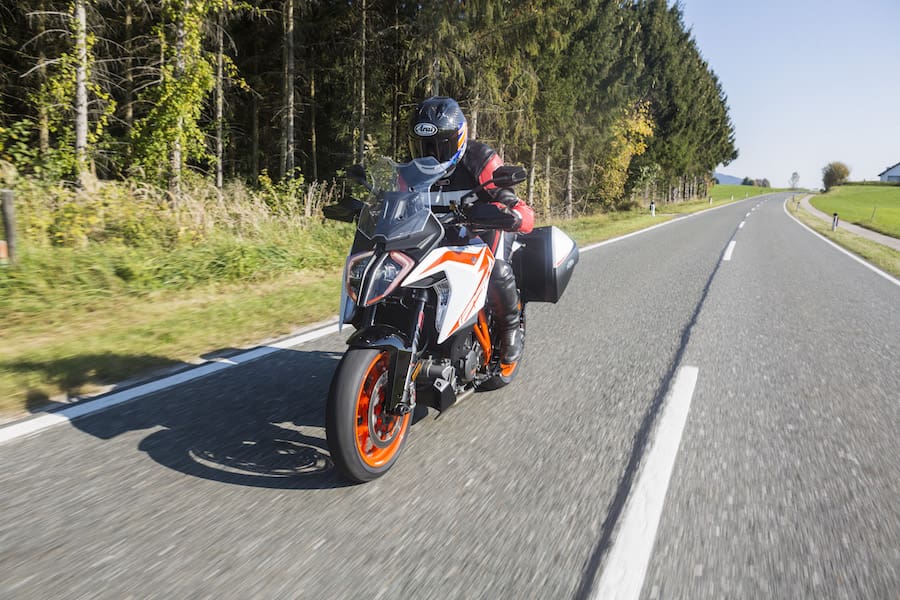
The specially designed handguards unique to the GT gave extra protection on chilly mornings, when the three-stage heated grips, again fitted as standard, but now with the wiring completely hidden, were very welcome. Both front brake and hydraulically-operated clutch levers are of course adjustable.
The test bike’s heated seat was super comfortable and also looked good, seemingly a big improvement over the outgoing bike’s when I swapped between the two. But that’s when I learned that this so-called Ergo Seat and its pillion counterpart were in fact on the list of 50-odd dedicated GT aftermarket accessories. Really, the Ergo Seat is so comfortable that it’d be a false economy not opting for it, and the same goes for those eminently practical hard bags, each of which will take a full-face helmet, albeit upside down. It’s also worth noting that with the luggage removed there’s no ugly frame left in open view – the steel mounting system is very discreet, and doesn’t detract from the bike’s styling. Very Kiska.
Also new for 2019 is the intuitive 6.5-inch full-colour FT dash which is both aesthetically pleasing as well as functionally effective – swapping back to the outgoing model showed its analogue tacho and LCD speedo to be downright retro. The TFT version’s full colour screen is visible in direct sunlight and features a choice of layouts, one more street focused and the other for track use. I love the way the tacho reading changes colour as revs rise, going from plink through red to scarlet and then crimson as it nears the 10,500rpm revlimiter, 500 revs higher than before. Working through the bike’s various menus and other functions is now done via an illuminated menu switch found on the left bar, where the switch for the cruise control included as stock has now also been moved over for greater convenience.
Read the full story in AMCN magazine, Vol 68 No 11

What’s changed ?
KTM has grabbed the engine from the flagship Super Duke R and, by spreading its range of huge torque out into a far more useable curve, has sacrificed a couple of horsepower. It’s thrown on a multidirectional quickshifter as well as the full gamut of lean-angle sensitive electronics, the engine has three switchable modes (street, sport and rain) as well as an optional track mode, the ABS system has four modes (street, sport, rain and supermoto) while the semi-active suspension offers three (comfort, street and sport).
There’s a swanky new 6.5-inch full-colour TFT dash which is operated via a back-lit menu switch on the left bar, next to the cruise control switch which has been moved over from the right side for the 2019 model year. There’s some hefty changes to the bike’s styling, not least to the new split-type front LED headlight, while daytime running lights and cornering lights mounted in the tank shrouds are also LED.
The software controlling the unchanged semi-active suspension hardware is vastly improved thanks to some sophisticated new algorithms. There’s a USB port in the two new fairing-mounted storage compartments and heated grips are now standard.
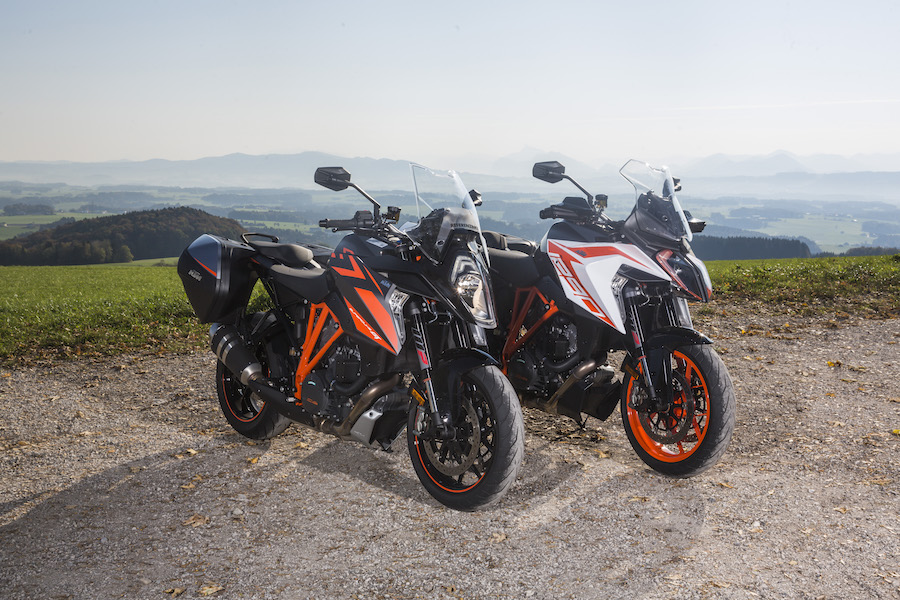
Test Alan Cathcart Photography Heiko Mandl
